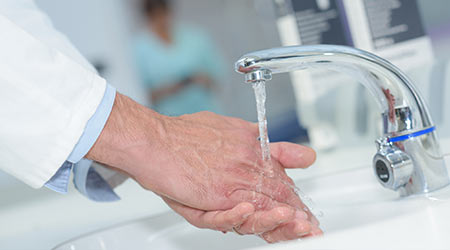
Preventable healthcare-associated infections (HAIs) sicken an estimated 721,800 Americans annually and cost as many as 75,000 patients their lives, according to findings from the Centers for Disease Control and Prevention (CDC). In an effort to raise awareness of the critical role infection prevention plays in improving patient safety, DebMed offers tips to improve hand hygiene compliance within healthcare facilities.
“Effective hand hygiene is the basis for all comprehensive infection prevention programs,” said Ron Chappuis, Vice President of Marketing, DebMed. “The CDC’s latest HAI Progress Report published just last year showed that when healthcare professionals actively engage in infection prevention measures, including effective hand hygiene protocols, it’s actually possible to reduce the rates of certain HAIs by more than 70 percent (CDC).”
To improve hand hygiene compliance and help to reduce the prevalence of HAIs, consider the following:
1. Reminders. Reinforce hand hygiene education efforts with hospital staff by posting reminders in staff break rooms, restrooms, locker rooms and other high-visibility locations. Reminder discussions should also take place during every meeting whether individual or all-staff.
2. Top-down Commitment. Employees are more likely to comply with hand hygiene protocols if they witness hospital leaders doing the same. Encouraging leadership to demonstrate commitment by practicing good hand hygiene, as well as communicating its importance to staff, can help foster a culture of compliance.
3. Track and Report. Electronic monitoring programs provide powerful information that healthcare professionals can use to understand, track and improve their hand hygiene performance. The data can complement the use of observations for real-time coaching and feedback. Consider implementing an electronic hand hygiene compliance system that has been clinically proven to improve hand hygiene performance and reduce HAIs.
4. Share Results. Share consistent and reliable data correlating HAI rates to hand hygiene compliance rates with employees so they can visualize the direct impact of hand hygiene on lower incidences of infection. Clinically validated data lends credibility to the message and has been shown to lead to higher performance.

 The Down and Dirty on Cleaning in Virus Season
The Down and Dirty on Cleaning in Virus Season How Surfactant Use is Expanding in Commercial Cleaning
How Surfactant Use is Expanding in Commercial Cleaning Clean Buildings Conference
Clean Buildings Conference